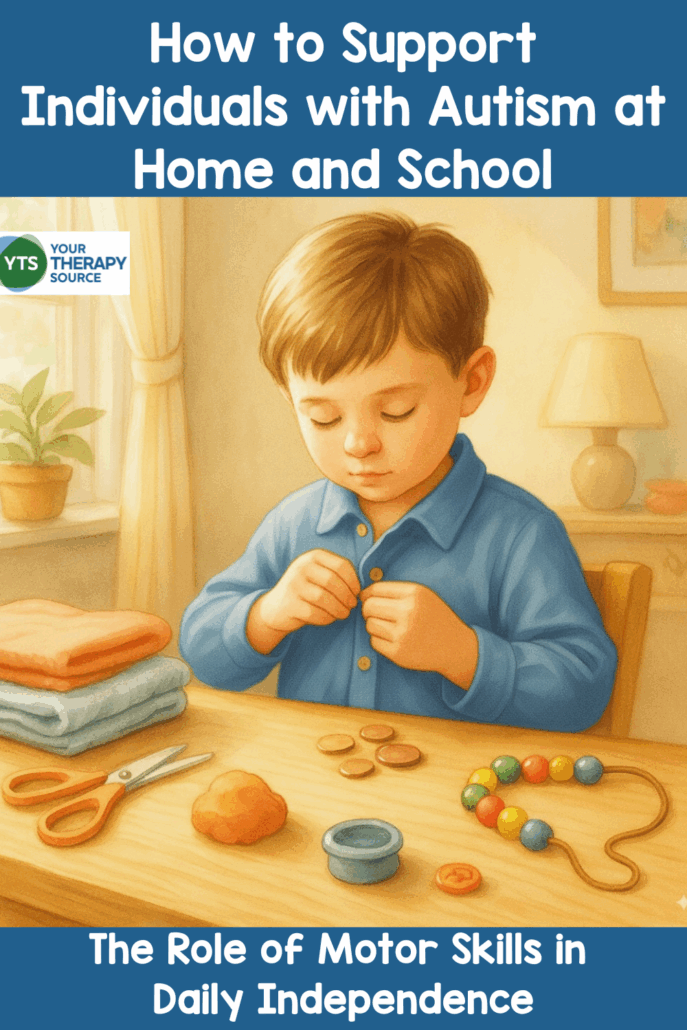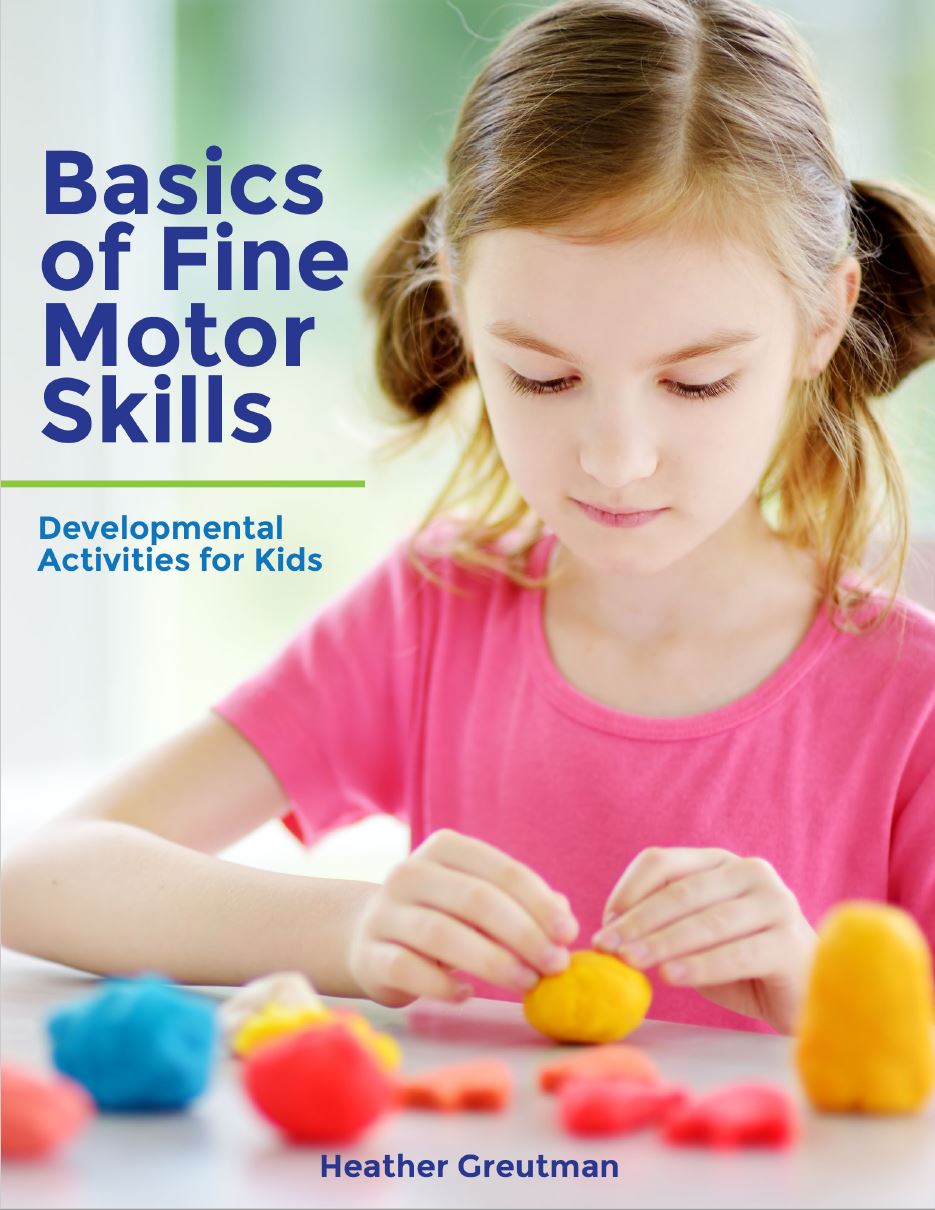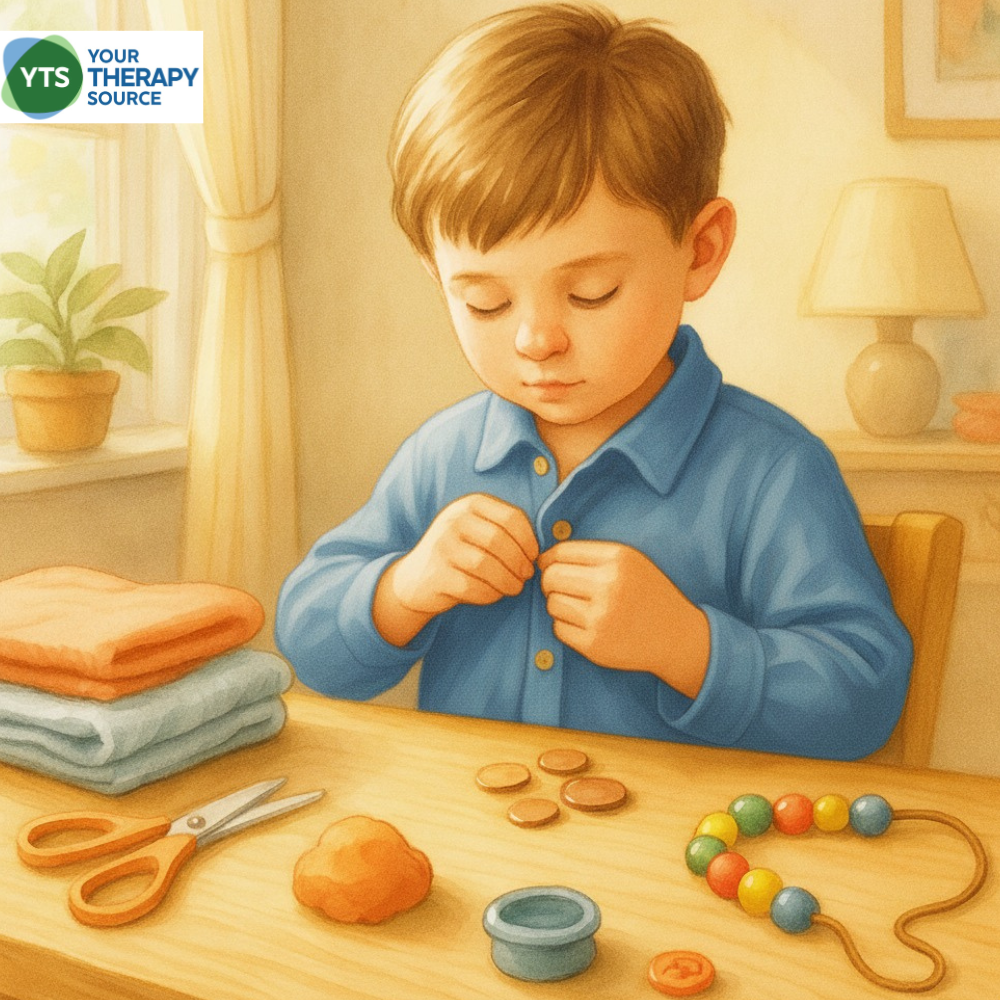Motor Skills and Independence in Autism
Daily living skills such as dressing, preparing meals, cleaning, and managing self-care are essential for independence across childhood, adolescence, and adulthood. Many autistic children and adolescents experience challenges with motor skills, and research has long suggested a link between motor difficulties and reduced daily living skills. But until recently, it wasn’t clear which specific motor abilities most strongly influence independence. A recent study by Skaletski, Cortes Cardona, and Travers (2024) explored motor skills and independence in autism. The findings help therapists, educators, and families understand where to focus efforts to best support autistic children and adolescents in building independence.

About the Study on Motor Skills and Independence in Autism
To better understand which motor skills are most closely linked to independence, the researchers examined a group of autistic children and adolescents using well-established assessments of both motor performance and daily living skills. This allowed them to look not only at overall abilities but also at specific skills that might play the biggest role in daily life.
- Participants: 90 autistic children and adolescents, ages 6–17
- Motor skills measured by: Bruininks-Oseretsky Test of Motor Proficiency, 2nd edition (BOT-2)
- Daily living skills measured by: Vineland Adaptive Behavior Scales (VABS-II)
- Additional factors considered: IQ and sensory processing features

Basics of Fine Motor Skills – Developmental Activities for Kids
Key Findings about Motor Skills and Independence in Autism
- Fine Motor Skills Are the Strongest Predictor – Tasks that required fine motor precision, like folding paper, drawing along a path, or handling small objects, showed the clearest connection to daily living skills. Even after accounting for IQ and sensory differences, fine motor skills remained a significant predictor of independence.
- Balance Relates to Daily Living for Some Children – Balance skills only connected to daily living independence in autistic children with lower IQ scores. For children with higher IQs, balance difficulties did not appear to limit daily functioning in the same way.
- Sensory Features Play an Important Role – When sensory processing was considered, the relationship between fine motor skills and daily living skills grew even stronger. This suggests that sensory challenges may magnify the impact of motor difficulties on independence.
- Other Motor Skills Have Smaller Effects – Bilateral coordination, ball skills, and upper-limb coordination showed weaker links to daily living skills. Once IQ and sensory features were considered, these connections became less meaningful.
What This Means for Therapists and Educators
The results point to clear directions for school-based therapy and classroom practice. Instead of trying to target every motor area equally, it may be most effective to focus on the skills that directly influence daily independence.
- Prioritize fine motor practice: activities that build precision and dexterity have the greatest impact on independence.
- Include sensory supports: adapting the environment can help children use motor skills successfully in real-life situations.
- Target balance when appropriate: for autistic children with lower IQs, balance work may contribute to greater independence.
- Emphasize task-specific practice: working on buttoning, folding, or handling coins may be more effective than focusing only on general motor scores.
What This Means for Parents
These findings also highlight how powerful everyday routines at home can be for skill development. Families don’t need special equipment—simple, built-in practice during regular activities can make a meaningful difference.
- Practice fine motor skills daily – buttoning, zipping, folding laundry, and opening containers are all excellent practice opportunities.
- Offer sensory supports when needed – movement breaks, fidgets, or a quieter space may help your child focus on tasks.
- Encourage balance through play – games like standing on one foot, hopping, or tiptoeing can build balance naturally.
- Keep practice functional and practical – using real clothing, household objects, or coins often works better than worksheets alone.
Practical Activities to Try
Here are a few simple ideas you can try at home or school. This isn’t a complete list, it is just a starting point. The main goal is to weave fine motor skills, balance, and coordination into everyday routines so children get plenty of natural practice.
1. Folding paper into shapes or airplanes
Helps with: precision, control, and sequencing
2. Sorting coins, buttons, or beads into containers
Helps with: hand coordination and real-world money handling
3. Practicing buttons and zippers on real clothing
Helps with: independence in dressing
4. Standing on one foot while brushing teeth
Helps with: balance and postural control in daily routines
5. Using playdough to roll, pinch, and cut shapes
Helps with: strengthening hand muscles for fine motor control
6. Stringing beads or pasta onto a shoelace
Helps with: eye–hand coordination and finger dexterity
7. Pouring water into cups or transferring with a spoon
Helps with: bilateral coordination and controlled movement
8. Using clothespins to clip onto paper or a line
Helps with: finger strength for tasks like opening packages
9. Playing simple ball games (catching, bouncing, or dribbling)
Helps with: upper-limb coordination and timing
10. Doing household tasks like wiping tables or sweeping
Helps with: motor planning and participation in family routines
This research confirms that fine motor skills are central to independence in autistic children and adolescents. Balance may be important for some children, especially those with lower IQ scores, and sensory supports can strengthen how motor skills translate into real-life functioning. For therapists, educators, and parents, the message is clear: focus on fine motor practice, integrate skills into everyday routines, and support children with the sensory tools they need. With this approach, autistic children can build confidence and independence at home, in school, and in the community.
Reference
Skaletski, E. C., Cardona, S. C., & Travers, B. G. (2024). The relation between specific motor skills and daily living skills in autistic children and adolescents. Frontiers in Integrative Neuroscience, 18, 1334241.



